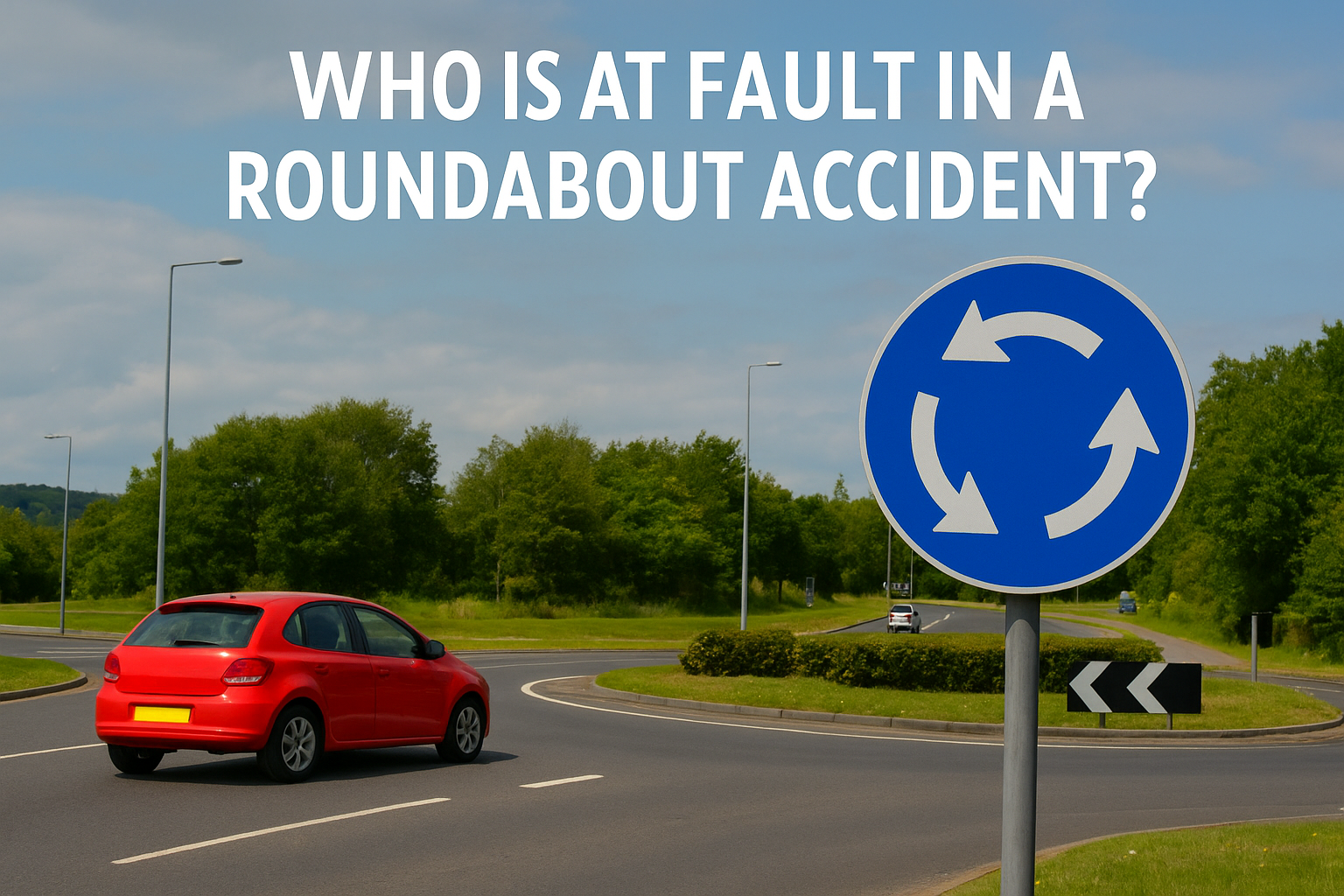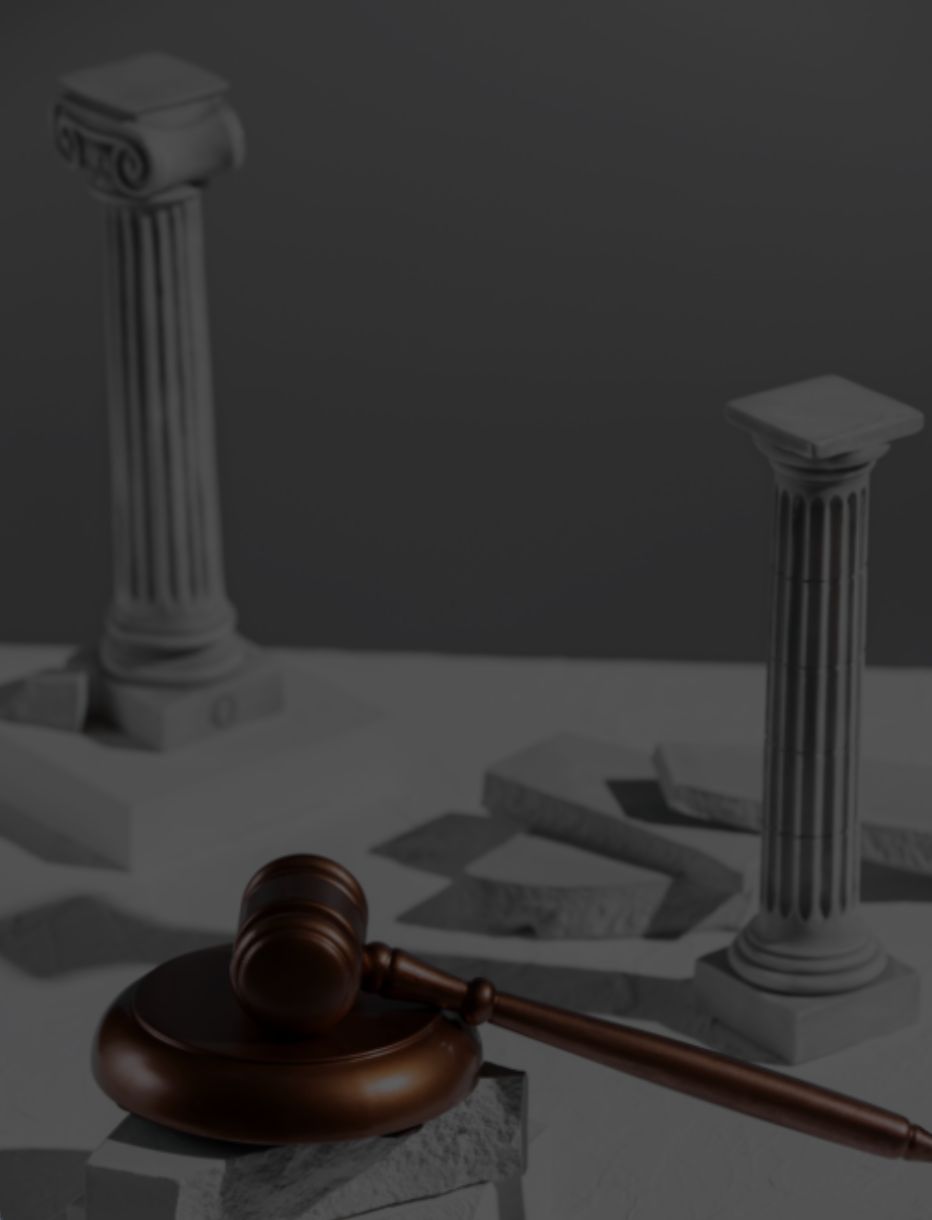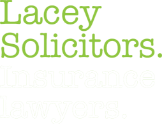Roundabouts keep traffic moving but they are also a common scene for collisions. Working out who is at fault in a roundabout accident can be complicated. Fault usually turns on who had right of way, who signalled correctly and whether any driver changed lanes or entered unsafely.
At Lacey Solicitors, we help innocent drivers, passengers, insurers, cyclists and pedestrians across Ireland and Northern Ireland resolve roundabout accident claims and assist in determining liabilty.
How Roundabouts Work
The Golden rule is always: traffic already on the roundabout has priority. Drivers entering must give way to vehicles approaching from the right. Both the Rules of the Road (Ireland) and Official Highway Code (Northern Ireland) require motorists to:
- Give way to the right.
- Use the correct lane for their intended exit.
- Signal left when leaving.
- Avoid sudden lane changes or cutting across traffic.
Common Causes of Roundabout Accidents in NI
- Failing to yield to circulating traffic.
- Entering or exiting from the wrong lane.
- Changing lanes suddenly.
- Not indicating correctly.
- Tailgating or harsh braking.
- Speeding or wet-weather skids.
- Driver distraction.
Typical Fault Scenarios
1. Entering without giving way:
A driver who joins and collides with a vehicle already on the roundabout is normally at fault.
2. Lane discipline errors:
Drivers who cut across lanes or exit from the wrong lane may be fully or at least partially liable if an accident occurs.
3. Failure to signal:
Not indicating if it contributes to a collision can result in a driver being held to a degree liable for the accident.
4. Rear-end impacts:
Usually the rear driver will be found at fault.
5. Collisions with cyclists or motorcyclists:
These vulnerable road users should be afforded strong legal protection due to their increased risk of serious injury. It is vital that you take care and look for cyclists and motorcyclists.
Proving Fault in Roundabout Accidents
Detailed documentation can help establish fault, clarify the circumstances of the accident, and protect your legal rights. Useful evidence includes:
- Dashcam or CCTV footage.
- Witness statements.
- Garda or PSNI reports.
- Photographs of vehicle positions and damage.
- Time-stamped messages or insurer correspondence.
Shared Responsibility
Whether it is Sandyknowes Roundabout Glengormley or Caw Roundabout in Derry, an inescapable truth is that in many roundabout accidents, fault is often shared between the drivers.
Liability is often be apportioned where both parties contributed to the collision, perhaps through poor observation, incorrect lane use, or failure to signal properly. This legal principle, known as contributory negligence, can reduce the amount of compensation awarded to reflect each driver’s degree of responsibility.
For example, where both drivers contributed equally to the accident, your compensation might be reduced by 50%.
Useful evidence like the evidence outlined above is critical to assisting your car accident solicitor in proving the other driver is at fault.
What to Do After a Roundabout Accident
- Ensure everyone is safe.
- Exchange driver and insurance details.
- Take photos of the scene if it is safe to do so.
- Report serious incidents to Gardaí or PSNI.
- Seek legal advice before speaking to insurers.
How Lacey Solicitors Can Help
With offices in Dublin and Belfast, Lacey Solicitors represent clients in all types of road traffic accident claims, including complex liability disputes arising from roundabout collisions.
Our experienced team can:
-
Investigate fault and liability using expert accident reconstruction and evidence analysis.
-
Engage directly with insurers and third parties to progress your claim efficiently.
-
Pursue full compensation for your injuries, vehicle damage, loss of earnings, and related expenses.
We provide clear, practical legal advice and ensure that every client receives a personal, professional, and transparent service from start to finish.








